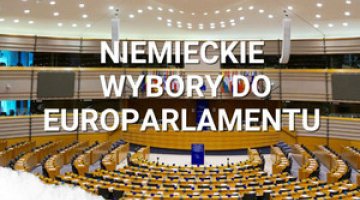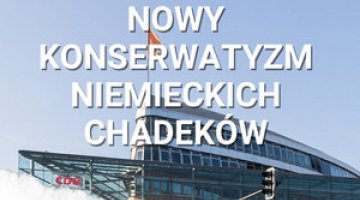TSMC will build a factory in Germany
On 8 August, Taiwan’s TSMC (the world’s largest manufacturer of advanced semiconductors), Germany’s Bosch and Infineon and Holland’s NXP announced their intention to set up the European Semiconductor Manufacturing Company (ESMC). As part of it, a semiconductor factory specialising in chips dedicated to industry and the automotive sector will start operating in Dresden (Saxony) in 2027. According to media reports the project, whose cost is estimated at €10 billion, will receive €5 billion in support from the German government from the off-budget federal Climate and Transformation Fund (KTF). This is funded by emissions trading and state subsidies, with €177.5 billion allocated for 2023-6. The ESMC will also receive EU support under the European Chips Act.
Commentary
- The investment is part of efforts by the West to diversify the global semiconductor supply chain. So far, over 90% of the most advanced chips (below 10 nm) and over 60% of the world’s semiconductors overall have been manufactured in Taiwan. In the face of intensifying Sino-American rivalry, the decision to move part of the production off the island is a preventive measure to protect Western countries against a possible shortage of semiconductors in the event of a conflict in the Taiwan Strait. However, most of the supply chains for cutting-edge processors will remain concentrated in Taiwan. Production in Germany will focus on the older-generation semiconductors (12/16 nm and 22/28 nm) necessary in the automotive industry, which is of key importance to the German economy. The project in Dresden will be another foreign factory set up by the Taiwanese giant. By 2024 mass production is to begin at its Kumamoto factory in Japan, and a year later in Phoenix, Arizona. According to media reports, TSMC is also considering building a second plant in southwestern Japan.
- TSMC’s past experience locating its factories outside Asia shows that it may be difficult to duplicate the company’s business model abroad. It had to delay the start of mass production in the United States due to the shortage of skilled workers. Staffing challenges are also expected in Dresden, which is why in recent months it reportedly has been looking for engineers in other countries, including Poland. Other problems mentioned by its American employees include the very strict employment conditions, as well as fears that local jobs would be taken by Taiwanese workers as part of plans, to increase their number at the Arizona factory. So far, however, these fears have proved to be unfounded.
- The project is in line with the European Chips Act, as the EU intends to increase its share on the global semiconductor market from the current 9% to 20% by 2030. To this end, the European Commission has been seeking cooperation with global semiconductor giants, such as TSMC, the American Intel and South Korean Samsung, and plans to invest €43 billion by 2030. As part of this cooperation, for example, Intel has declared its intention to build a chip assembly and testing facility in Miękinia near Wrocław (Poland). The Taiwanese project in Dresden may be accompanied by similar investments in supply chains in Poland and other Central and Eastern European states. Efforts to this end have been made, for example, by the Czech Republic.
- The TSMC factory is an element of the German government’s strategy to reduce import dependence on China and to balance its economic ties with this country (see Germany's strategy towards China: A farewell to illusions). Severe effects of the cuts to chip supplies became apparent, for example, during the COVID-19 pandemic (see Gospodarka Niemiec – pandemiczne uderzenie i jego konsekwencje). Following Russia's sudden suspension of energy supplies, Berlin fears that a similar scenario could materialise in the event of a conflict in the Indo-Pacific region. For example, the disruption of supply chains would particularly affect the German automotive and IT industries. According to the Handelsblatt newspaper, the TSMC venture may also have been the subject of an informal meeting between federal minister of education and research Bettina Stark-Watzinger and the company’s representatives during her visit to Taiwan in March this year.
- To minimise the risk and ensure uninterrupted supplies, the German government is offering financial support to initiatives aimed at transferring chip production to Germany; the investment by TSMC is another such project. This step has already been taken by the American companies Wolfspeed and Intel, which will locate factories in Ensdorf (Saarland) and Magdeburg (Saxony-Anhalt) respectively, and by Germany’s Infineon, which will build a plant in Dresden. Such projects are of particular importance for the eastern federal states. Europe’s largest microelectronics cluster, bringing together representatives of industry and science, operates in Saxony, and has been dubbed ‘Silicon Saxony’. In response to Intel’s move, the government of Saxony-Anhalt decided to create a special supra-ministerial agency known as Silicon Junction, which is tasked with coordinating the development of the infrastructure and the park of modern technologies around it. In this context, the TSMC project is another step towards bridging the economic differences between the west and east of Germany. Furthermore, local politicians see it as a harbinger of hope that more investments of this type will be made in the region. However, the size of the state subsidies granted for such projects (about 30% of the value in the case of Intel’s project, and 50% for TSMC) to industry tycoons generating multi-billion profits has sparked controversy in expert discussions. Furthermore, Stefan Kooths, the director of the Business Cycles and Growth Research Centre at the Kiel Institute for the World Economy (IfW) has expressed doubts as to whether Intel’s plant will have the expected impact on the creation of new jobs.
- The TSMC plant is not the first project to be co-financed by the federal government using KTF funds, which have already been used to support projects by Intel and Deutsche Bahn. Berlin has been taking advantage of the fund’s off-budget nature to contribute to investments that could otherwise be an additional burden on the state’s finances, which the government wants to avoid. Thus, after weeks of disputes over the state budget, it finally reintroduced the debt brake and embarked on a pro-austerity course (see The debt brake is back: the German government presents a draft budget).





